Articles
Boost Your Confidence with Expert Rhinoplasty

Rhinoplasty, often referred to as a "nose job," is a procedure that goes beyond just enhancing your appearance. While it’s widely known in Singapore for its cosmetic benefits, rhinoplasty also addresses functional issues, improving both the aesthetic and health aspects of the nose.
Whether you’re considering it for better facial harmony, improved breathing, or both, understanding the full scope of rhinoplasty surgery can help you make an informed decision. Discover how this versatile procedure can truly transform your confidence and well-being.
Understanding Rhinoplasty
Aesthetic Enhancements
For many, rhinoplasty surgery is a way to harmonise facial features and achieve a more balanced look. They choose to enhance their nose to feel more satisfied with their appearance or address features they've always felt self-conscious about, such as a bump on the bridge or a wide nose.
Some of the most common aesthetic enhancements include:
- Smoothing the Nasal Bridge: Removing bumps or humps for a straighter profile.
- Refining the Nasal Tip: Adjust a bulbous, drooping, or overly upturned tip for better definition.
- Reducing the Overall Nose Size: Making the nose smaller or narrower to suit facial proportions.
- Increasing the height of the nose: For those with low nasal bridges or short noses, rhinoplasty surgery can help to correct these aspects.
- Correcting Asymmetry: Aligning uneven features to improve balance.
- Narrowing Wide Nostrils: Reducing the width or flare of nostrils for a sleeker look.
- Balancing Nose Proportions: Ensuring the nose complements other facial features, such as the chin or cheekbones.
- Customising for Feminine or Masculine Traits: Enhancing features to align with gender-specific aesthetic preferences.
These enhancements bring subtle improvements that can highlight your natural beauty while maintaining a look that feels uniquely yours.
Functional Benefits
Rhinoplasty surgery can provide dramatic functional improvements, especially for individuals who have structural issues that affect their breathing. Common functional benefits include:
- Improving Breathing: Structural abnormalities like a deviated septum can obstruct airflow, making it difficult to breathe through the nose. Rhinoplasty can correct these issues, ensuring a clear nasal passage and smoother airflow.
- Alleviating Sleep Problems: Many people with nasal obstructions experience disrupted sleep due to difficulty breathing. Correcting these issues can lead to more restful and uninterrupted sleep.
- Correcting Chronic Nasal Congestion: Structural problems in the nose, such as enlarged turbinates, can lead to persistent congestion. Rhinoplasty can address these issues, offering long-term relief from stuffiness and discomfort.
- Restoring Function After Injury: Nasal trauma from accidents or sports injuries can result in breathing difficulties. Functional rhinoplasty not only repairs the external appearance but also restores internal functionality.
These functional improvements demonstrate that rhinoplasty surgery isn't just about aesthetics but a life-enhancing procedure for those struggling with nasal obstructions or breathing difficulties.
Addressing Congenital Defects
Some people are born with nasal abnormalities that impact their appearance and quality of life. These congenital disabilities can cause impaired airflow and difficulty breathing.
With rhinoplasty surgery, they have an opportunity to correct these congenital issues by reshaping and reconstructing the nasal structure. For example, repairing structural defects like a collapsed nasal valve or an uneven septum can significantly enhance airflow, easing breathing and improving overall nasal function.
Addressing congenital disabilities through rhinoplasty surgery can also have a profound emotional impact. Corrective surgery helps to harmonise facial features and create a more balanced appearance, empowering patients with newfound confidence. The procedure not only changes how they look but also how they feel about themselves, contributing to better self-esteem and a more positive outlook on life.
What to Expect During the Rhinoplasty Journey
The Initial Consultation: Your Questions Answered
Your rhinoplasty journey will start with an in-depth consultation, during which you'll have the chance to share your concerns and expectations with your surgeon. This is a safe space to also ask any questions you may have about the procedure, recovery, and potential outcomes.
During this meeting, your surgeon will also review your medical history, examine your nasal structure, and discuss what's possible based on your unique anatomy. It's a collaborative process to ensure you are confident, informed, and feel comfortable with your decision to move forward.
By the end of the consultation, you'll have a clearer understanding of what rhinoplasty can achieve and whether it's the right choice for you. If you decide to proceed with a rhinoplasty surgery, your surgeon will create a customised plan to enhance both the look and function of your nose, giving you a natural-feeling result.
The Procedure: Step-by-Step Overview
Rhinoplasty surgery is done under general anaesthesia or local anaesthesia with sedation so that you remain comfortable throughout the procedure. The surgery itself takes between one to three hours, depending on the complexity and type of rhinoplasty.
Your surgeon will begin by making either an open or closed incision based on the extent of the changes needed. To obtain the desired results, the surgeon may reshape the bone, cartilage, or a combination of both, carefully sculpting the nose to enhance its appearance or improve its function.
Recovery and Aftercare Guidance
After your procedure, you'll receive detailed instructions that are tailored to your specific recovery process. It's essential to follow these guidelines closely, as they help ensure the best possible outcome and reduce the chances of complications.
Your surgeon will also be available for follow-up appointments to assess your healing progress and adjust your care if necessary.
Recovery Tips for the Best Results
Healing after rhinoplasty surgery is a gradual process, but with the proper steps, you can feel more comfortable during this time.
Following Post-Operative Instructions
Your surgeon will give you a personalised set of aftercare instructions that are critical to ensuring a smooth recovery. These guidelines are meant to help your nose heal optimally while reducing the risk of infection and other complications. Do reach out to your surgeon if you have any issues during your recovery.
Managing Swelling Effectively
Swelling is expected during the healing process and can take a few months to subside fully. To manage swelling, applying cold compresses in short intervals during the first few days can bring relief.
Prioritising Rest and Elevation
Adequate rest is essential to your recovery after rhinoplasty surgery. Getting enough sleep and taking breaks throughout the day will help your body focus on healing. Keeping your head elevated, especially at night, is key to minimising swelling and discomfort while promoting proper circulation during sleep.
Avoiding Physical Strain for Optimal Healing
Please refrain from strenuous physical activities, including heavy lifting or intense exercise, for at least several weeks after your surgery. Giving your body the time it needs to heal will not only prevent stress on your healing nose but also help avoid any potential setbacks in your recovery process.
Understanding the Timeline: Patience is Key
While the early days might feel challenging, be patient throughout the healing process. Your nose will slowly start to take its final shape, which can take several months. It is expected to undergo subtle changes as the tissues continue to adjust.
Who Is a Good Candidate for Rhinoplasty Surgery?
Rhinoplasty surgery may be right for you if:
- You're in good overall health.
- Your facial growth is complete (typically age 16 or older).
- You have realistic expectations about the procedure.
- You're seeking to improve the appearance or functionality of your nose.
Why Choose Our Rhinoplasty Services?
Polaris Plastic & Reconstructive Surgery prides itself on staying current with developments in rhinoplasty surgery in Singapore and combining modern technology with skilled techniques. Our experienced surgeons are trained to provide the best possible outcomes for you.
We understand that no two noses are alike, so our approach is to customise every treatment plan based on your facial features and goals. This ensures natural-looking results while enhancing the overall harmony of your face.
We believe in listening to our patients and truly understanding their desires. Throughout the entire process, your aesthetic goals remain at the forefront of our plan. Polaris Plastic & Reconstructive Surgery is dedicated to maintaining the highest professional standards, ensuring your safety, satisfaction, and confidence throughout your rhinoplasty surgery experience.
Achieve Natural-Looking Results with Polaris Plastic Surgery
Rhinoplasty surgery is not only for cosmetic enhancement. It can also address functional issues and improve the quality of life for those with existing conditions or those who have suffered nasal injuries.
If you are interested in rhinoplasty surgery in Singapore for any of the reasons we discussed earlier, please contact us.
Frequently Asked Questions
How long does it take to see the final results?
While initial swelling settles within a few weeks, the final results of rhinoplasty surgery may take up to 12 months to fully appear as your nose gradually settles into its new shape.
Does insurance cover rhinoplasty?
Insurance may cover rhinoplasty if it's performed to address functional issues, such as breathing problems. Cosmetic procedures are typically not covered. Check with your provider for details.
Are there non-surgical alternatives to rhinoplasty?
Non-surgical options, like dermal fillers, can address minor aesthetic concerns but don't offer the permanent results or functional benefits of surgical rhinoplasty.
Will there be noticeable scarring?
Most rhinoplasty surgeries involve minimal scarring. Incisions are often made inside the nose or in inconspicuous areas, making scars virtually invisible once healed.
What are the risks associated with rhinoplasty?
Like any surgery, rhinoplasty surgery carries risks of infection, bleeding, or complications with anaesthesia. We advise you to choose a qualified and experienced surgeon significantly to reduce these risks.
Contact Form
1 Orchard Boulevard #10-08 Camden Medical Centre, Singapore 248649
6 Napier Rd, #08-01 Gleneagles Medical Center, Singapore 258499
Tel: +65 6737 4565 | Mobile: +65 8828 4565 | Email: clinic@polarisplasticsurgery.com | Business Hours: Mon - Fri: 9am - 6pm | Sat: 9am - 1pm | Sun/Ph: Closed











